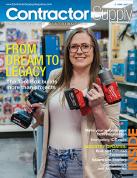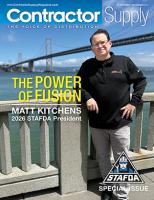CFFA: For Roofing, the Higher the Reflection Rate, the Better
PVC roofing reflects 80% of sunlight, helps keep cities cooler.

The solution to urban heat islands (UHI) is roofing material with a high reflection rate – such as PVC/vinyl roofing.
UHI is a phenomenon in which cities are hotter than rural areas – by an average of five to ten degrees Fahrenheit, and sometimes as much as 20 degrees. Among the biggest contributors is dark, impermeable roofs that absorb solar energy and radiate heat that is either transferred inside the building or blown off the roof to heat the surrounding air.
Replacing dark roofs with lighter-colored roofing such as PVC is a primary UHI mitigation strategy. According to the Chemical Fabrics and Film Association - Vinyl Roofing Division, it all comes down to reflection rates – how much the roof reflects solar energy away from its surface. Dark roofs reflect no more than 20 percent of incoming sunlight, giving them a low reflection rate of 0.20 or less. PVC roofing, meanwhile, has initial reflectivity values starting at the 0.80 range, meaning it reflects at least 80 percent of sunlight. New PVC roofs are typically 28 to 36 degrees Celsius cooler than dark roofs. Even as they age, they remain 20 to 28 degrees Celsius cooler.
Retrofitting 80 percent of the 2.6 billion square meters of commercial building roof area in the U.S. would yield net annual energy cost savings of $735 million. Globally, cool roofs could save billions of dollars.
Roofs make up to 35% of the urban fabric, so implementing sustainable PVC roofs can rapidly change cities. Roofs are replaced every 15-20 years on average – a replacement rate of 5-7% per year. That means entire cities can be transformed in just two decades. The benefits of better roofing start the minute they are installed.
For more information on the benefits of cool PVC roofing, visit https://vinylroofs.org/.
About Chemical Fabrics and Film Association - Vinyl Roofing Division
The Vinyl Roofing Division of the Chemical Fabrics and Film Association was created to educate architects, specifiers, building owners and roofing contractors on the attributes of PVC/vinyl as a durable, reflective, heat-weldable material for single-ply roofing systems. Representing all of the leading manufacturers of thermoplastic PVC roofing systems in North America, the Division is committed to making available sound, scientifically backed information on the environmental and functional performance of energy-efficient PVC roofing membranes. https://vinylroofs.org/.
















